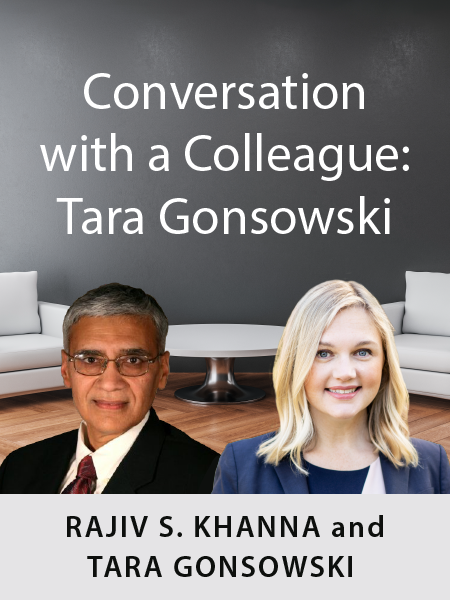This article is part of a continuing series of interviews between Rajiv S. Khanna and leading practitioners across the country, designed to provide personal and professional insights into various areas of the law.

Rajiv S. Khanna: Tara, welcome. Please introduce yourself to our readers.
Tara Gonsowski: Thank you so much for having me. My name is Tara Gonsowski and I have a boutique firm that serves museums and other nonprofit cultural institutions around the country. I had previously worked in-house at a major modern art museum and saw firsthand that museums have a huge legal workload but often a small legal budget. I thought there was a real need for a firm that provides specialized arts-related legal services through a cost-efficient model for museum and other nonprofit clients.
Interested in learning more? Check out ALI CLE’s Legal Issues in Museum Administration 2024, on demand now!
What kind of legal work would exist in museums?
We provide all transactional services. Museums are corporations like any other except they’re nonprofits, so we’ll review and negotiate any sort of contract that might come across the museum’s desk, whether it’s an art-specific agreement related to a commission, installation, loan, or exhibition or agreements for janitorial services for the museum, elevator services, software agreements, marketing agreements, internship, and volunteer agreements. Really any contract that the museum might need legal counsel on.
So, the typical issues you encounter are related to contracts that are common to all nonprofits, not specific to museums?
Yes. But there are some museum-specific considerations when we’re looking at the risk that museums are willing or able to take on because they hold their assets in trust for the benefit of the public and serve specific, charitable purposes in relation to the art that they make available to the public.
Do you also deal with things like when exhibits are on loan to museums? What do you watch out for?
That’s a lot of what we do. We work in that realm in two ways. We help our museum clients draft really solid incoming and outgoing loan templates that they can use when either borrowing or lending artworks. When they’re doing a specific loan, whether it be incoming or outgoing, we help review and negotiate the terms as necessary.
Talk to me about the history of your career. How did you happen to become a specialist in museum-related work?
I took a very non-traditional career path. When I was starting college, I thought I wanted to be a lawyer, but I didn’t have any lawyers in my family and I didn’t really know the different areas of law, so I couldn’t justify the financial or time commitment at that time. I also was taking art history courses and had always loved art, so I pursued that path instead. I worked at a gallery in New York for about 10 years where I started to see firsthand how art and the law intersected. In particular, an issue came up in relation to the Endangered Species Act and some works that we had in our collection, and I helped navigate that and resolve it for the gallery. When I saw that I could actually marry my two passions, I decided to go to law school. So, I went back to law school later in life after I had already had a full career that was hard to leave. While I was in law school, I was hyperfocused on working in art law. Because it is a niche field, there aren’t a ton of opportunities so in order to build my skill set and gain as much experience as much as I could, I worked with an organization called Volunteer Lawyers for the Arts, providing free legal aid to low-income artists.
During law school, I also worked in-house at Christie’s as an intern and then I had my post-grad position, which was a general counsel fellowship at SFMOMA and that was where I really got this museum experience. Of all the areas in the art world I had worked, working at a museum was where I felt the most rewarded and most passionate about the work I was doing. I felt like I could see in the museum the impact of the work that I did and that’s how I kind of stuck in that path.
CLICK HERE to read the full article, which was originally published in ALI CLE’s The Practical Lawyer.
To find our more about ALI CLE’s in-person courses or webcasts, or to check out on-demand CLE, click here.
